

FICTION IS A MAGIC TRICK of sorts. But at its best it doesn’t just conjure up an imaginary world; it makes the real one disappear, it makes the author disappear. Only a book can do this — let you lose yourself so completely. So, if you can, forget about everything else. Just be there with the book.
Jami Attenberg, Author of All Grown Up
Interview, NY Times Book Review, March 26, 2017
And in the other corner . . .


A GREAT OBSTACLE to good education is the inordinate passion prevalent for novels, and the time lost in that reading which should be instructively employed. When this poison infects the mind, …[t]he result is a bloated imagination, sickly judgment and disgust towards all the real businesses of life.
Thomas Jefferson
Letter to Nathaniel Burwell, March 14, 1818
| Click on images | |||||
 |
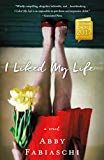 |
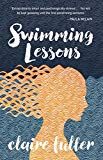 |
|||
 |
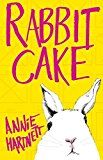 |
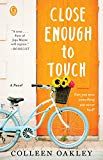 |
|||
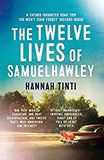 |
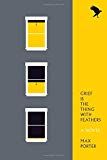 |
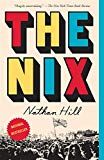 |
|||
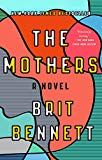 |
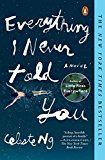 |
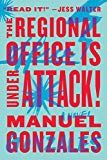 |
|||
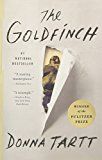 |
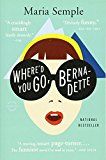 |
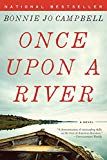 |
|||
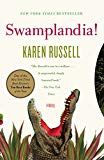 |
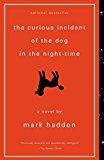 |
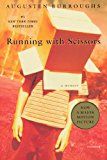 |
|||
Have you noticed the number of absent mothers at the heart of new novels lately? So far I count SEVEN—in the first quarter of 2017 alone—surely there are more.
1/10 The Sleepwalker
1/31 I Liked My Life
1/ 7 Swimming Lessons
1/ 7 Universal Harvester
3/ 7 Rabbit Cake
3/ 7 Close Enough to Touch
3/28 Twelve Lives of Samuel Hawley
Then there are last year's books, as well as those over the past several years—most famously The Goldfinch and Where'd You Go, Bernadette. We can even go back to the early-aughts.
The missing mothers in these stories TAKE OFF…
or wander off…
or die…
or are killed…
or kill themselves.
Sometimes it happens before the novel opens, sometimes within its pages.
Whenever or however they disappear, fictional moms leave heartbreak and loneliness in their wake—a grief so profound it shapes a character's motivations and actions throughout the novel.
It is an age-old literary trope, which authors use to set their protagonists on the path of the Hero's Journey—a quest for self-discovery, belonging, and self-acceptance.
One of the best missing mother novels? Dickens' David Copperfield—the mother of all missing mother stories.
By the way...I've written on a this subject a number of years ago. See Lost Mothers—Why authors bump off moms.
 Rachel Cusk, wants to reinvent the novel, at least according to the New York Times Book Review.* Just writing that makes me break into a sweat. Why do we have to reinvent the novel?
Rachel Cusk, wants to reinvent the novel, at least according to the New York Times Book Review.* Just writing that makes me break into a sweat. Why do we have to reinvent the novel?
Okay, I get it. It's a bit like composers wondering where to take symphonic music after Beethoven. Ludwig pretty much said it all.
Poor Johannes Brahms: when folks heard his first symphony, they went, "OMG! It's Beethoven's 10th." Or so the story goes.
After 200+ years of the novel as art form, it's understandable that authors might want to try something different.
Perhaps you've noticed the trend toward SHIFTING POINTS OF VIEW, different characters taking turns at the helm…
. . . surely you've noticed the frequent use of SHIFTING TIME FRAMES, the lack of straightforward chronology…
. . . or maybe you've noticed the use of ALTERNATIVE TEXTS: news clips, diary entries, handwritten letters, scholarly papers, emails, even PowerPoint…
. . . how about the use of ALTERNATE REALITIES?
Sometimes it's hard to tell exactly where you are...or what character you're following—one of the criticisms leveled at Paul Auster's otherwise highly touted new book 4321. Other times, all this narrative disruption can make it hard to engage with the characters.
Yet we know people see and experience life differently. And that is precisely what the new fiction is trying to get at—to point out that human perception isn't cut in stone, that there is more than one way of seeing a particular event, and that memory is faulty.
Nonetheless, don't you miss the comfort of a single narrator? I do. I have a yen for that 19th-century style of writing in which someone steps onto your front porch, claims a seat, and tells you a grand story.
I hate being old-fashioned and curmudgeonly. But I'm weary of the fact that EVERY new book I pick up messes with point of view and chronology. Friends, I just had to get that off my chest.
* New York Times Book Review, January 29, 2017, cover review of Rachel Cusk's Transit.
 Ha! And you thought librarians were goody-two-shoes. Well, here's a TRUE CRIME story that'll make your toes curl.
Ha! And you thought librarians were goody-two-shoes. Well, here's a TRUE CRIME story that'll make your toes curl.
The AP reported that the county library in Sorrento, Florida, was caught red-handed in a devilishly clever SCAM. Over the course of nine months some 2,000 books had been checked out by a fake card holder.
Now THAT, dear reader, is registration fraud. But get this: the books were always returned. Within an hour. Undamaged.
The Big Reader was Chuck Finley, except Chuck Finley doesn't exist (at least with an East Lake Library card). It turns out two librarians had dummied up an ID and used it to check out books, dozens at a time—everything from John Steinbeck's Cannery Row to Why Do My Ears Pop, a children's book by Ann Fullick.
It was all for a good cause—to save the books from the chopping block because books that HAVEN'T BEEN CHECKED OUT for a period of time are removed from the county system. So the two librarians took it upon themselves to SAVE as many books as they could.
Until someone ratted them out. What a kill joy.
But who's the bad guy here—the fink or the perps? Bleed though our hearts may, it's hard to say. With some 300,000 titles published a year by major U.S. houses (50,000+ for fiction alone), libraries face a serious SHORTAGE of space. Budgets aren't the only thing being squeezed… so are books on shelves.
Still, how can we NOT relate to these two benighted—or beknighted—souls, so enamored of books that they can't bear to have them tossed in the dust bin of history? (Btw, I've no idea what's become of our librarians—to say nothing of all the BOOKS.)
A humorous yet sad tale.
 So imagine: you're walking into one of your local library branches, as I was recently, and you find right in front of you a sumptuous table, positively laden with tote bags—each of them charmingly tagged by theme and filled with used books.
So imagine: you're walking into one of your local library branches, as I was recently, and you find right in front of you a sumptuous table, positively laden with tote bags—each of them charmingly tagged by theme and filled with used books.
For $10 any Book Bundle could be yours. Patrons get the books (from 4 to 6), AND they get the tote bag. It's enchanting.![]()

